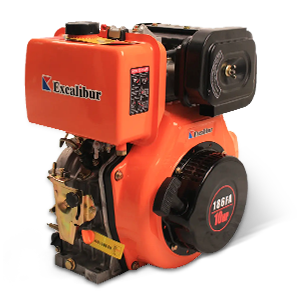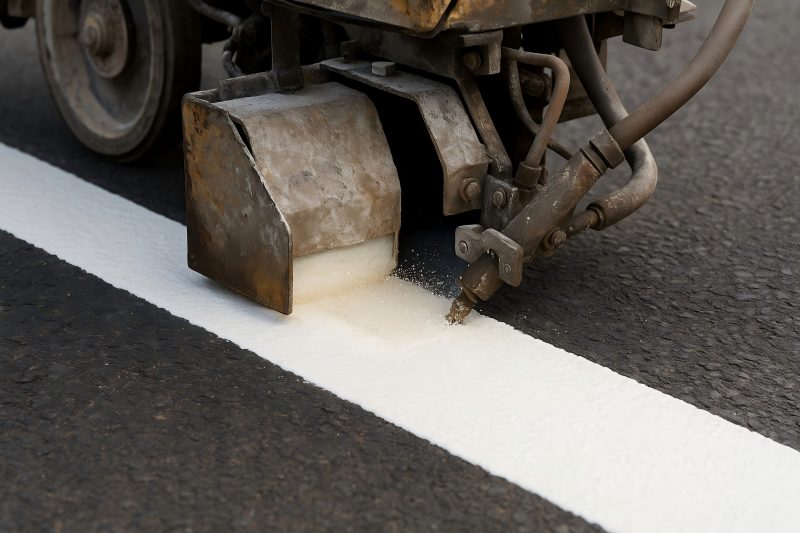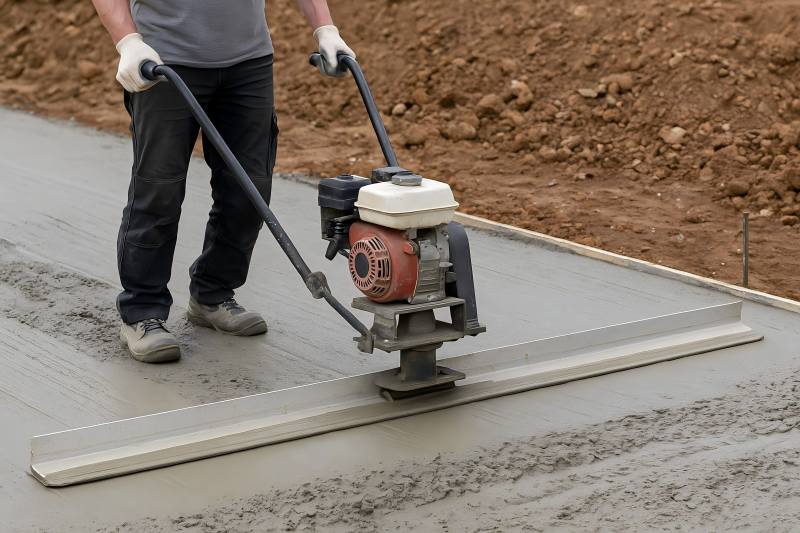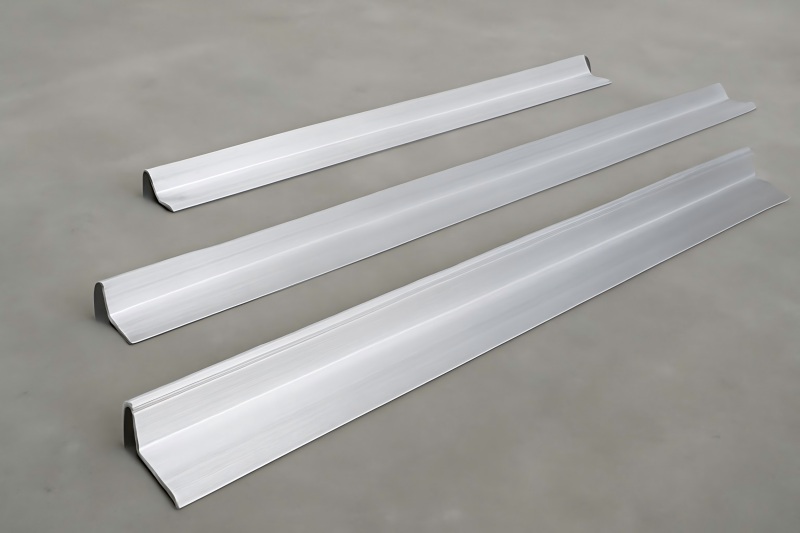Thermoplastic road marking systems are widely recognized for their durability, retroreflectivity, and cost-effectiveness over time. When applied correctly, thermoplastic markings can last several years—withstanding heavy traffic, harsh weather, and daily wear. However, even small deviations in preparation, heating, or application can result in serious defects such as peeling, cracking, discoloration, or poor reflectivity.
Thermoplastic Line Marking
Before addressing issues, it’s important to understand how thermoplastic works. Thermoplastic marking materials consist of resins, pigments, fillers, glass beads, and plasticizers. Solid at room temperature, thermoplastic melts into a viscous liquid when heated to 180–220°C. The molten material is applied to road surfaces using screed, extrusion, or spray machines, and glass beads are added to ensure retroreflectivity.
When properly applied:
- The material adheres strongly to the pavement.
- The coating cools quickly, forming a tough, wear-resistant layer.
- Glass beads remain partially embedded, reflecting headlights at night.
When the process goes wrong, however, these desired properties fail—and the result can be reduced visibility, premature wear, or total marking failure.
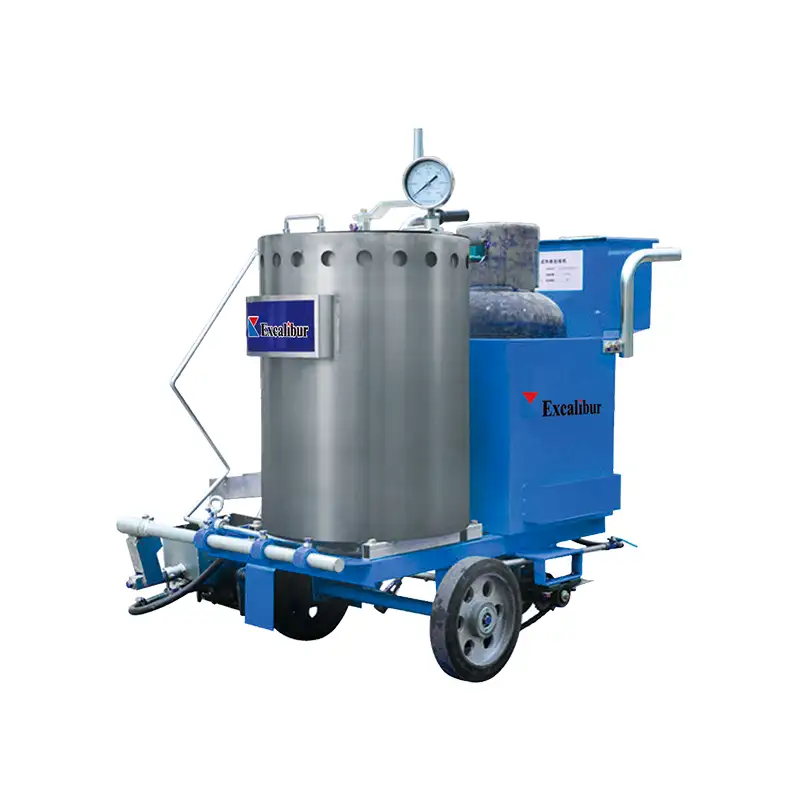
Common Problems in Thermoplastic Line Marking
Poor Adhesion to Pavement
Symptoms:
- Markings peel off shortly after application.
- Sections lift in sheets or flakes.
- Edges curl or separate from the substrate.
Likely Causes:
- Pavement surface was dirty, oily, or moist.
- No primer/tack coat used on concrete.
- Application temperature too low (<180°C).
- Pavement temperature too low (<10°C).
- Rapid cooling before full bond formation.
Fixes:
- Always clean pavement thoroughly—use high-pressure air or a wire brush to remove dust, oil, and laitance.
- For concrete, apply a primer (thermoplastic-compatible) and allow it to dry before marking.
- Check melt temperature with a thermometer; maintain it between 180–220°C.
- Ensure pavement is dry and above 10°C before applying.
- Avoid windy conditions to prevent uneven thermoplastic cooling.
Cracking and Brittleness
Symptoms:
- Cracks appear across markings within weeks or months.
- The surface becomes chalky or brittle.
- Pieces break away under vehicle pressure.
Likely Causes:
- Overheating material (>230°C) causes resin degradation.
- Incorrect material formulation (low plasticizer content).
- Application too thick (>3 mm) or uneven.
- Base pavement expansion/contraction (thermal stress).
Fixes:
- Maintain temperature within manufacturer-specified range using thermostats.
- Stir melted material continuously to prevent localized overheating.
- Apply in uniform thickness (1.5–3 mm max).
- Choose flexible thermoplastic blends for regions with large temperature swings.
- Avoid reheating leftover material multiple times—it degrades quickly.
Poor Retroreflectivity
Symptoms:
- Markings look dull or non-reflective at night.
- Light from vehicle headlights does not return effectively.
Likely Causes:
- Insufficient or uneven glass bead application.
- Beads not embedded deeply enough (or too deep).
- Wrong bead type or poor-quality beads.
- Excessive material flow burying beads.
- Contamination of beads with dust or moisture.
Fixes:
- Calibrate bead dispensers to ensure uniform bead flow (typically 250–400 g/m²).
- Adjust timing so beads drop immediately after application—before skin forms.
- Ensure proper bead embedment: about 50–60% of bead diameter should be submerged.
- Store glass beads in a dry, sealed environment to prevent clumping.
- Use approved high-index beads (n=1.5 or 1.9) for maximum retroreflectivity.
Discoloration or Yellowing
Symptoms:
- White markings gradually yellow or brown with time.
- Color fading appears uneven or patchy
Likely Causes:
- Material overheated during melting, burning pigments or resins.
- Contamination from old, degraded material.
- Airborne dust or exhaust settling on still-hot markings.
- Low-quality pigments with poor UV stability.
Fixes:
- Keep melt temperature below 220°C to avoid resin oxidation.
- Clean kettles regularly to remove carbonized residue.
- Avoid reheating aged material multiple times.
- Use UV-stabilized pigments certified for outdoor road use.
- Apply markings in clean, low-dust environments when possible.
Uneven Thickness or Line Width
Symptoms:
- Lines vary in thickness or width.
- Edges appear rough or wavy.
- Excess material accumulates at start/stop points.
Likely Causes:
- Incorrect shoe or extrusion plate adjustment.
- Material viscosity too high or too low (temperature error).
- Inconsistent movement speed of the machine.
- Operator inexperience.
Fixes:
- Adjust screed or extrusion shoes to maintain consistent gap height.
- Verify melt temperature for proper flow.
- Train operators to maintain constant walking or vehicle speed.
- Use mechanical or laser guidance systems for precision edges.
- Perform test runs on scrap areas before large-scale marking.
Air Bubbles or Pinholes
Symptoms:
- Small craters or pinholes visible on surface.
- Poor adhesion and uneven texture.
Likely Causes:
- Moisture on pavement or condensation during application.
- Over-agitation introducing air during melting.
- Rapid cooling causing trapped gas expansion.
Fixes:
- Ensure pavement is completely dry; delay marking if humidity is high.
- Stir material gently and steadily—avoid vortex agitation.
- Allow molten material to rest briefly before application to release air.
- Maintain proper temperature to prevent foaming.
Shortened Service Life
Symptoms:
- Premature wear and fading.
- Frequent re-striping required.
Likely Causes:
- Material layer too thin (<1 mm).
- Poor substrate preparation or incorrect temperature.
- Low-quality raw materials.
- Heavy traffic and snowplow abrasion.
Fixes:
- Apply thermoplastic within 1.5–3.0 mm thickness range.
- Use premium-grade materials tested for abrasion resistance.
- Schedule maintenance inspections annually to re-bead or touch up lines.
- In snow regions, use profiled or structured markings to enhance durability.
Overheating and Carbonization
Symptoms:
- Smoke or burning smell during melting.
- Material turns dark brown or black.
- Poor flow and brittle finish.
Likely Causes:
- Melt temperature exceeds manufacturer’s limit (usually 220°C).
- Faulty or absent temperature control systems.
- Leaving material heated for too long without circulation.
Fixes:
- Install reliable thermostatic controllers in kettles.
- Stir material continuously during melting.
- Avoid reheating leftovers from previous operations.
- Clean kettles frequently to prevent residue build-up.
Preventive Maintenance for Equipment
The best way to reduce problems is through routine maintenance of your thermoplastic marking machines.
| Equipment Component | Common Issue | Preventive Action |
| Preheater/kettle | Overheating, residue buildup | Clean regularly, monitor thermostats |
| Screed/extrusion shoe | Clogging, uneven flow | Flush with solvent before cooling |
| Bead dispenser | Clogged nozzle, uneven drop | Test flow before use, keep dry |
| Agitator | Motor wear | Lubricate bearings, inspect belts |
| Hoses | Blockage, cracks | Inspect for leaks, replace as needed |
| Burner | Weak flame, carbon buildup | Clean jets, maintain fuel pressure |
Consistent calibration and skilled operator training ensure reliable, high-quality thermoplastic marking performance.
Advanced Tips for Quality Control
- Measure Pavement Temperature before every operation using an infrared thermometer.
- Test Adhesion with a small patch before large-scale work.
- Check Thickness using a marking gauge or metal caliper.
- Retroreflectivity Test: Use a handheld retroreflectometer to verify RL (dry) and RW (wet) readings.
- Batch Tracking: Keep records of material lot numbers, temperatures, and weather conditions for traceability.
- Operator Training: Educate crews on melt temperature, machine speed, and bead application timing.
Case Study: Addressing Peeling on Concrete Roads
A contractor experienced massive peeling of thermoplastic markings within two weeks of application on a concrete expressway. Investigation revealed:
- No primer was applied.
- Pavement was slightly damp due to overnight condensation.
- Pavement temperature was only 8°C.
Corrective Actions:
- Recleaned surface using an air lance and gas torch to remove moisture.
- Applied thermoplastic-compatible primer and allowed full drying.
- Monitored pavement and material temperatures (≥15°C and 190°C).
- Reapplied lines—adhesion was successful, with no peeling after one year.
This example illustrates how surface and temperature control are more critical than speed or volume in ensuring success.
Safety Considerations
Working with molten thermoplastic involves burn, fire, and fume hazards:
- Always wear PPE: heat-resistant gloves, face shields, and flame-retardant clothing.
- Keep fire extinguishers near kettles.
- Avoid overfilling kettles to prevent overflow.
- Store raw materials and beads in dry, shaded areas away from open flames.
- Follow proper ventilation standards during application to limit exposure to fumes.
Modern Innovations for Quality Control
Recent advancements in thermoplastic marking equipment have reduced defect rates and improved application precision:
- Digital temperature control systems automatically regulate kettle temperature.
- Laser-guided alignment ensures consistent line straightness.
- Automated bead dispensers synchronize perfectly with line speed.
- GPS and data logging provide real-time monitoring of speed, temperature, and bead rate—enabling performance analysis and predictive maintenance.
Adopting these modern technologies minimizes human error and enhances overall marking quality.
Thermoplastic line marking remains a cornerstone of road safety infrastructure, offering unmatched visibility and durability when applied correctly. However, common problems such as poor adhesion, cracking, discoloration, or loss of reflectivity often stem from avoidable causes—temperature mismanagement, improper surface preparation, or inadequate operator training.
By understanding these issues, following manufacturer specifications, and implementing routine quality checks, you can significantly extend the service life of markings and reduce costly rework.
In summary:
- Keep temperatures within 180–220°C.
- Apply only on clean, dry, warm surfaces.
- Maintain uniform thickness and bead distribution.
- Conduct regular maintenance on equipment.
- Provide operator training and record-keeping.

